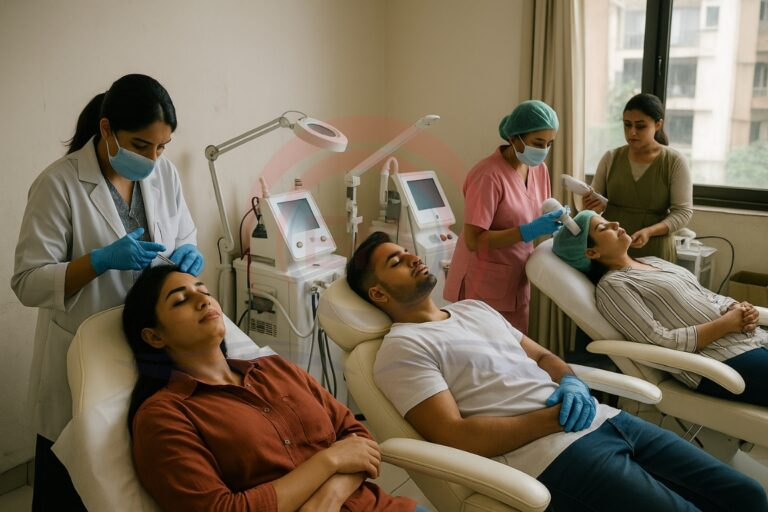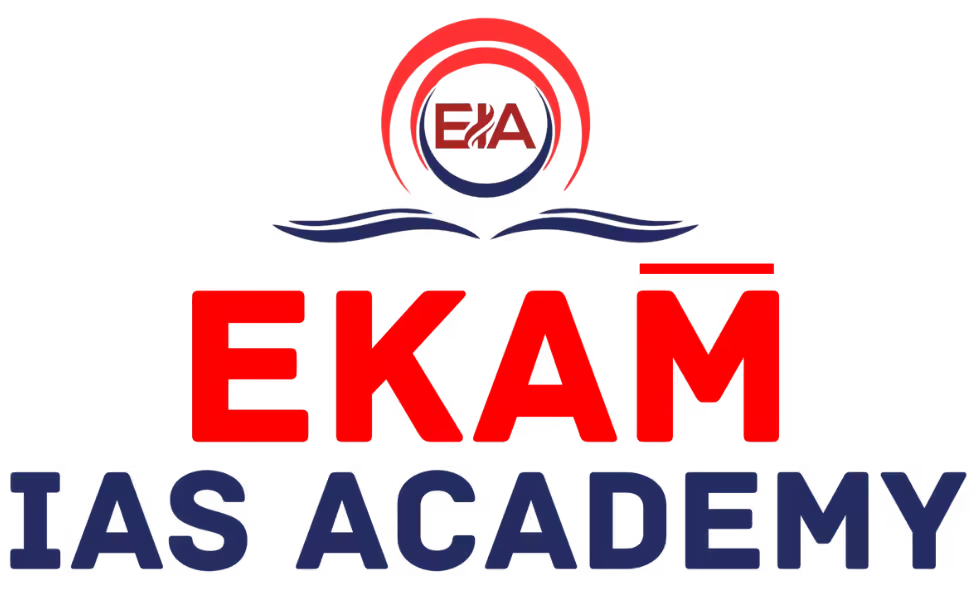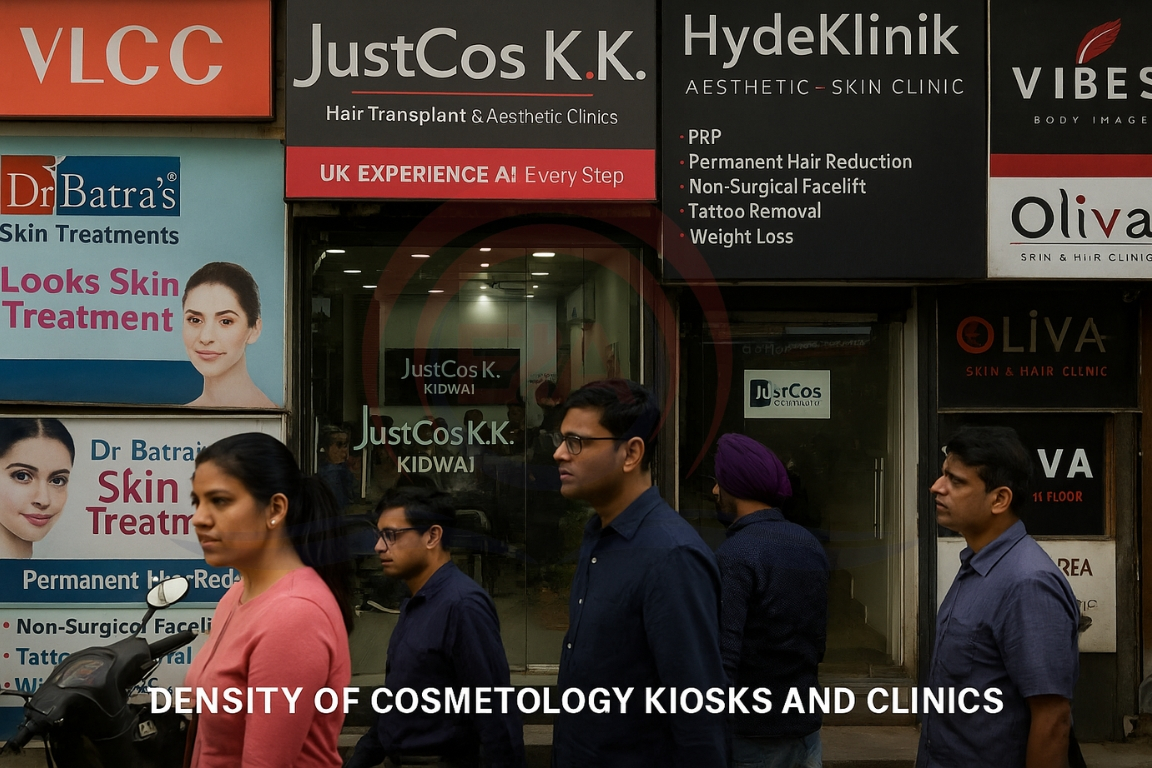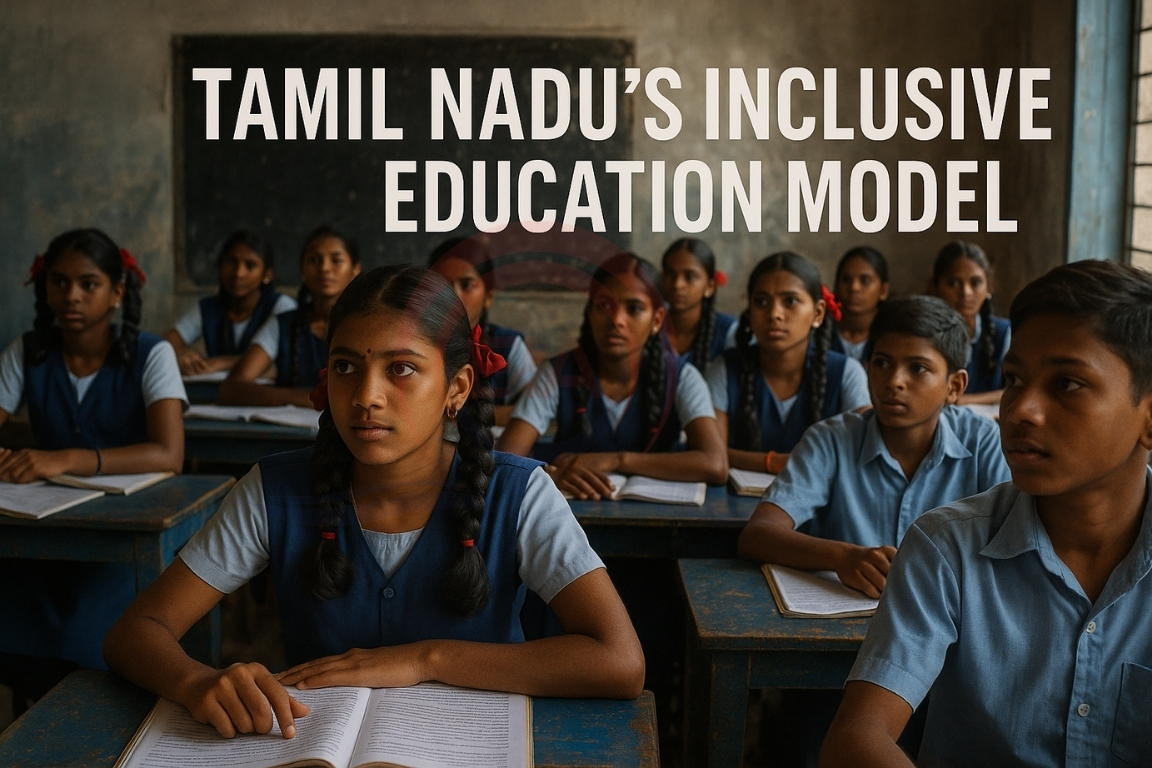The booming aesthetic and wellness industry in India has created a parallel rise in unregulated cosmetology and dermatology clinics. While the market was valued at USD 2.5 billion in 2024, it is projected to touch USD 4 billion by 2033 (IMARC Report).
Scope of the Problem
- Mushrooming of cosmetology clinics across cities, often without medical oversight.
- Growing demand due to social media influence, beauty standards, and rising disposable income.
- Public perception that cosmetic procedures are quick and safe, leading to unchecked demand.
Unqualified Practitioners
- Dentists, AYUSH doctors, and even non-medical individuals performing hair transplants, botox, fillers, PRP facials.
- Short-term, unrecognised “weekend certificate courses” sold for ₹1–2 lakh used as a license to practice.

Unsafe Clinics
- Many clinics function without sterilisation protocols, proper licenses, or hospital tie-ups.
- Qualified doctors’ names often misused without their presence.
Health Risks
- Cases of necrotising fasciitis, skin barrier damage, steroid withdrawal, and even deaths.
- Patients misled with unlabelled creams, fake PRP, exaggerated claims.
Misuse of Terminology
- “Cosmetology” often confused with dermatology.
- True cosmetology refers to beauty services (haircuts, makeup, manicures), not medical procedures.
Regulatory Challenges
- Weak enforcement of the National Medical Commission (NMC) Guidelines on Aesthetic Surgery & Hair Transplant Procedures.
- Overlap and conflict between NMC, Dental Council, and AYUSH councils.
- Lack of inspections or dedicated monitoring bodies.
- Kerala Clinical Establishments Act and similar laws in other states not fully implemented.
Current Efforts
- Indian Association of Dermatologists (IADVL) committees actively highlighting quackery in dermatology.
- Karnataka IADVL submitted memorandum for public awareness campaign.
- Telangana Medical Council carrying out inspections, booking clinics under Sections 34 & 54 of NMC Act for impersonation and illegal practice.
- Some state councils issuing warnings, but action remains piecemeal.
Way Forward
- Strict licensing and inspection system for clinics offering dermatology/aesthetic services.
- Public awareness campaigns to counter misleading advertisements.
- Clear demarcation of scope of practice among MBBS, dermatologists, dentists, AYUSH, and beauty professionals.
- Establishment of a national registry of practitioners with recognised qualifications.
- Encouraging patients to seek care only from board-certified dermatologists and plastic surgeons.
Conclusion:
India’s booming cosmetology market holds promise but also risks sliding into a public health crisis if left unchecked. Regulation, enforcement, and awareness are critical to safeguard vulnerable patients. As experts warn, “If it sounds too good to be true, it probably is.”





